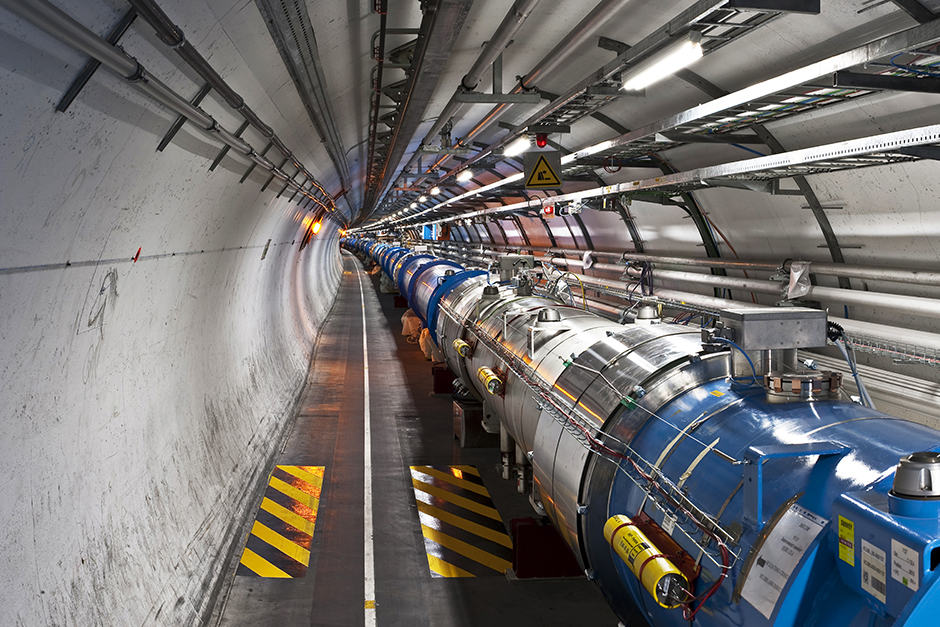A U of T physics professor was awarded a medal earlier this month for his contributions to the discovery of the Higgs boson.
The Vogt Medal for Contributions to Subatomic Physics recognizes individuals who have made outstanding contributions to subatomic physics in Canada. It was awarded to professor Pierre Savard earlier this month by the Canadian Association of Physicists in conjunction with TRIUMF, Canada’s national laboratory for particle physics.
Savard is a leading particle physicist and a member of U of T’s Experimental Particle Physics group. He is one of several U of T faculty who are active members in the Large Hadron Collider collaboration (LHC).
Located on the border of Switzerland and France, the LHC is the world’s largest particle accelerator. The accelerator is a continuous machine that spans a 27-kilometre circular tunnel — about the length of the TTC’s Bloor-Danforth line. Construction of the collider cost several billion dollars, and required the collaboration of around 10 thousand scientists and engineers from more than 100 countries. The sheer scale makes the LHC the largest and most complex scientific experiment of the modern age.
In the LHC, subatomic particles are accelerated to enormous energies and speeds close to the speed of light. Housed in subterranean caverns along the accelerator are massive detectors in which the particles are made to collide in the hopes of discovering new particles.
“If you’re familiar with Einstein’s famous E=mc2 equation, you can transform energy into mass. We start with two protons, we collide them together and out of this collision we create new particles, new matter,” says Savard.
In 2012, the LHC stunned the scientific community when two separate detector projects on the accelerator independently confirmed the discovery of the most sought-for particle in particle physics — the Higgs boson. Proposed independently by two scientists in the 1960s, the Higgs boson fills in an essential piece of the Standard Model of particle physics. The Higgs boson and its associated Higgs field is responsible for explaining why particles have mass.
“What’s really important, in fact, is not necessarily the Higgs boson but the Higgs field. Because all our particles, our electrons, our quarks, or whatever, they feel this Higgs field everywhere in the universe, and by feeling this Higgs field they acquire their mass,” explains Savard.
Savard co-led the Higgs boson group of the ATLAS experiment, and was part of analyzing one of the Higgs boson’s key decay modes. He also led the analysis team that confirmed the spin-zero nature of the particle, which is important in establishing that the discovered particle is consistent with the Higgs boson described by the Standard Model.
“It’s the first particle, fundamental particle, that we found that had no spin, and this we measured by the way that it decays and is produced — it has the properties of a Higgs boson,” says Savard.
“All the tests that we’ve done make the particle that we’ve found consistent with the Higgs boson of the Standard Model,” he adds.
Savard is one of the several members of U of T’s Experimental Particle Physics group, which produces a large share of Canada’s contribution to the LHC project. The accelerator is restarting, possibly this week, after a two-year shutdown for upgrades. Scientists at the LHC are trying to reach higher collision energies than ever before in a search for new particles. Among other things, the experimental physics group is working on improving the equipment and instrumentation that makes this possible.
“There are a few things that we know are out there for sure that we haven’t found,” says Savard.
“We might find something that finally shows that the Standard Model is indeed flawed. We could break it, we could find something that is not predicted by it, or that one of its predictions is wrong.”


